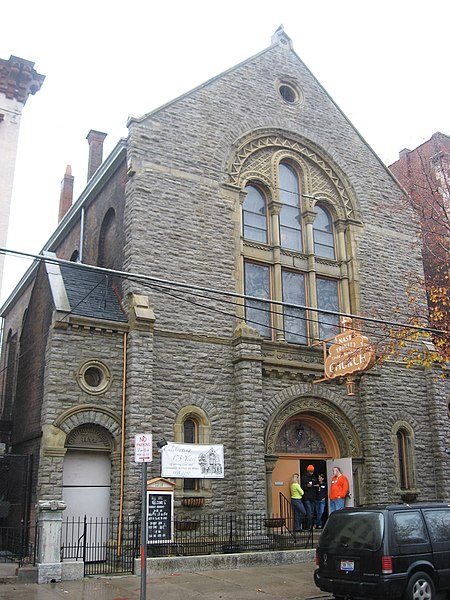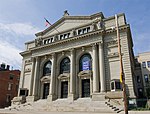Nast Trinity United Methodist Church
1880s architecture in the United States1881 establishments in Ohio19th-century Methodist church buildings in the United StatesChurches completed in 1881Churches in Cincinnati ... and 9 more
German-American culture in CincinnatiGerman-American historyHistory of Methodism in the United StatesMethodist Episcopal churches in the United StatesNational Register of Historic Places in CincinnatiOver-the-RhineSamuel Hannaford and Sons Thematic ResourcesSamuel Hannaford church buildingsUnited Methodist churches in Ohio

The former Nast Trinity United Methodist Church, now known as The Warehouse Church, is a historic congregation of the United Methodist Church in Cincinnati, Ohio, United States. Designed by leading Cincinnati architect Samuel Hannaford and completed in 1880, it was the home of the first German Methodist church to be established anywhere in the world, and it was declared a historic site in the late twentieth century.
Excerpt from the Wikipedia article Nast Trinity United Methodist Church (License: CC BY-SA 3.0, Authors, Images).Nast Trinity United Methodist Church
Race Street, Cincinnati Over-the-Rhine
Geographical coordinates (GPS) Address External links Nearby Places Show on map
Geographical coordinates (GPS)
| Latitude | Longitude |
|---|---|
| N 39.109722222222 ° | E -84.516388888889 ° |
Address
Nast-Trinity United Methodist Church
Race Street 1310
45202 Cincinnati, Over-the-Rhine
Ohio, United States
Open on Google Maps







